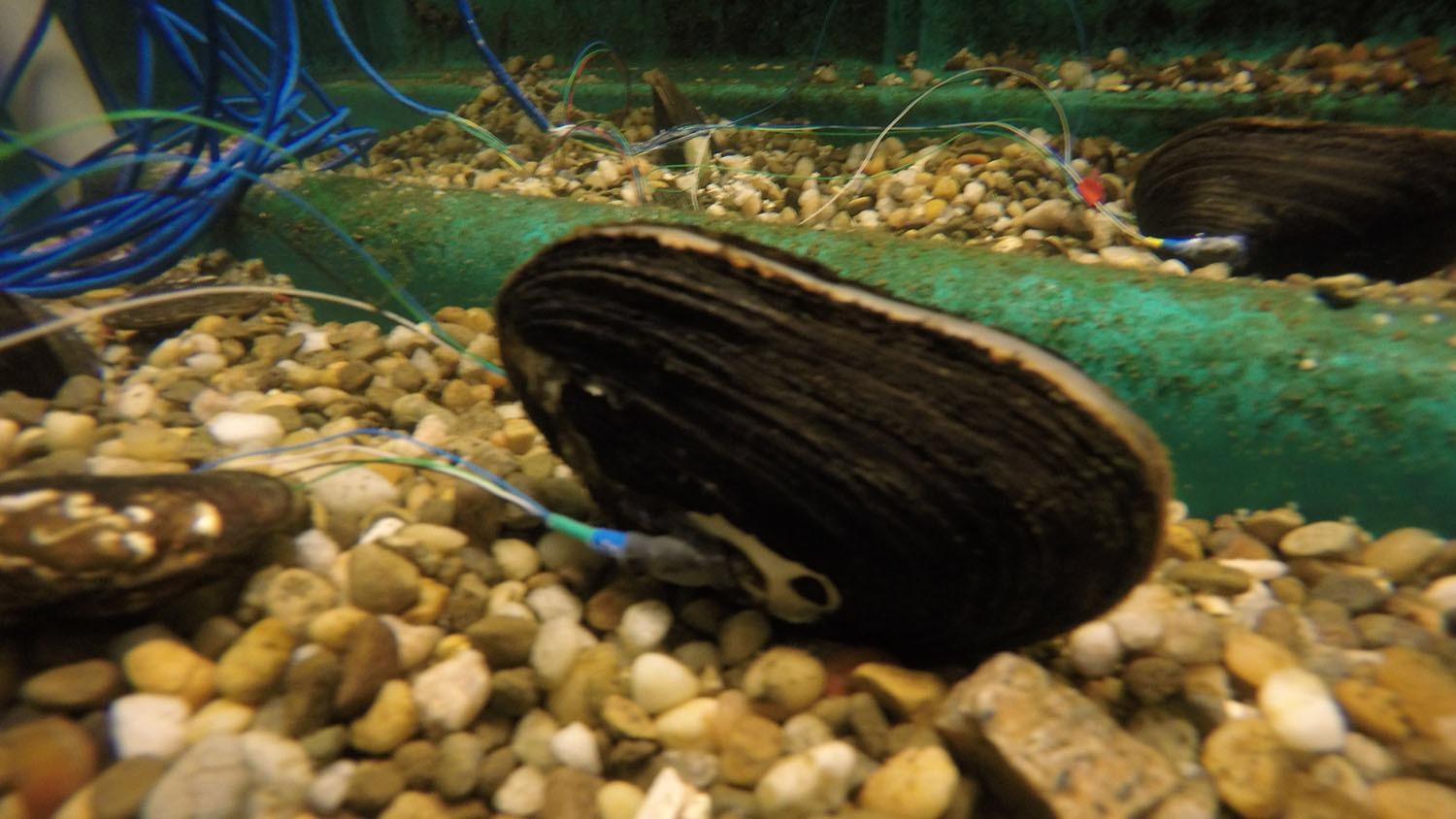
Image Credit: NSCU
The opening and closing of mussels in unison could give researchers an efficient way to detect the presence of toxins in aquatic environments.
Bivalve mollusks like mussels are creatures that are particularly vulnerable to the risks posed by contamination and other adverse environmental conditions. This results from the fact that the shell that offers them protection from predators can move, leaving gaps that expose the creatures to water pollutants. But, these same shells could assist scientists in tracing toxins in aquatic ecosystems.
Should mussels sense contamination when they open their shells to feed, they almost immediately close them. And, because the opening and closing of shells in mussels aren't synchronized, if a large bed of mussels closes their shells in unison, it's a good sign there is some contamination in the water.
That is the concept behind a new research project emerging from North Carolina State University (NC State) scientists. The team has developed a novel system that can remotely monitor freshwater mussels and how they behave - meaning a system that can potentially detect toxins in freshwater environments.
When mussels feed, they open their shells; but if there's something noxious in the water, they may immediately close their shells, all at once.
Jay Levine, Professor, Epidemiology, North Carolina State University
Levine is the co-author of a paper detailing the mussel monitoring system published in the journal IEEE Sensors Letters¹ alongside fellow NC State professor Alper Bozkurt and Ph.D. students at the University Parvez Ahmmed and James Reynolds.
We’ve basically designed a custom Fitbit to track the activities of mussels.
Alper Bozkurt, Professor, Electrical Engineering, North Carolina State University
A Fitbit for Molluscs
Levine explains that this isn’t the first attempt to use bivalves and their response to toxins as a tracer of conditions in aquatic ecosystems. “Folks have been trying to find ways to measure how widely mussels or oysters open their shells off and on since the 1950s, but there have been a wide variety of challenges,” the NC State professor explains. “We needed something that allows the animals to move, can be placed in streams and collects data — and now we have it.”
To develop their relatively low-cost system the team employed components that are already widely available but used this technology in a previously untried novel way.
One of the most crucial parts of the system is the two inertial measurement units (IMUs) that are placed on each animal, one on the top half of its shell, the second on the bottom. These IMUs consist of an accelerometer — akin to the type of device used in smartphones to detect movement — and a magnetometer.
The placement of these sensors on the mussels’ shells allows the team to record how the shells are moving in relation to one another — particularly when the creature is closing or opening its shell. Vitally, the IMUs can distinguish this kind of motion from movement caused by the mussel being shifted or rolled by a strong current.
A stake with a solar-powered unit was placed in the waterway near the mussel bed tested, which collates data collected by the sensors. This data is then wirelessly transmitted to the researchers.
Our aim is to establish an ‘internet-of-mussels’ and monitor their individual and collective behavior. This will ultimately enable us to use them as environmental sensors or sentinels.
Alper Bozkurt, Professor, Electrical Engineering, North Carolina State University
The Internet Has Mussel
The team performed 250 hours of testing within a lab fish-tank with live mussels, obtaining impressive results that revealed the sensors to be remarkably accurate.
There are several steps that the team will now be looking to take in order to upgrade their mussel-based environmental monitoring system.
One of the first key tests for the team is to determine if there are circumstances not related to the presence of contaminants that could result in mussels sealing their shells in coordination.
Doing this may require scaling up the mollusk-monitoring network used by the current system. Though the team says the system can handle dozens of mussels, just four animals were used in the team's experiments.
In addition to helping monitor ecosystems, the team believes that their system could help us learn more about these remarkable creatures themselves.
“Think of it as a canary in the coal mine, except we can detect the presence of toxins without having to wait for the mussels to die,” Levine says. “At the same time, it will help us understand the behavior and monitor the health of the mussels themselves, which could give us insights into how various environmental factors affect their health. Which is important, given that many freshwater mussel species are threatened or endangered.”
References
¹ Ahmmed. P., Reynolds. J., Levine. J. F., Bozkurt. A., [2021], ‘An Accelerometer-based Sensing System to Study the Valve-gaping Behavior of Bivalves,’ IEEE Sensors Letters, [https://ieeexplore.ieee.org/document/9382075/authors#authors]
Disclaimer: The views expressed here are those of the author expressed in their private capacity and do not necessarily represent the views of AZoM.com Limited T/A AZoNetwork the owner and operator of this website. This disclaimer forms part of the Terms and conditions of use of this website.